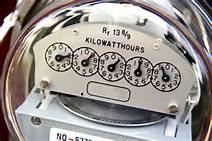Having failed the Privacy by Design Test, Irish Water have lurched into one of my other specialist areas today, Information Quality. This story in the Irish Times http://www.irishtimes.com/news/environment/some-householders-having-trouble-reading-water-meters-1.1959841 relates to the quality of information presentation in the design of some of the meters used by Irish Water. It also relates to data quality characteristics such as adequacy, precision, and accuracy, and how Irish Water don’t seem to be able to grasp the customer perspective.
Some back ground information for people first:
Information Quality Management is the application of quality management principles to the management of information. It’s what I do. I’ve done it for longer than I’ve done Data Protection. I consider data protection compliance to be a component of or a subset of Information Quality.
The key determinant of quality is, in all cases, the customer. Danette McGilvray (a very good friend of mine and mentor, and one of the pioneers in the field of information quality) defines “Quality Information” as information that is fit for any or all required purposes. Dr Tom Redman (who lead the Data Quality labs in Bell Telecom in the 1980s and was one of my first mentors in the field, and who now guest lectures in UCC and the IMI) defines data as being of good quality if they are “fit for their intended uses in operations, decision making, and planning”. Larry English (another mentor of mine early in my career, and who I had the honour of hosting at a conference in Dublin a few years ago) stressed the importance of the “product specification” for information, particularly in the context of the process goals or objectives for an employee or customer.
So… data is of good quality if it can be used. That quality is a product of design.
Irish Water have implemented a number of processes and policies that call for the consumer to be able to have an accurate reading of their water consumption. As the water consumption is billed in litres, allowances are provided in litres, and bills will be a calculation of litres consumed minus allowances times the price per litre, consumers would reasonably be assumed to have a reasonable expectation that they might read their bill in litres.
Given that, if you have a leak, you want to find it quickly before it floods out and costs you money, it’s only reasonable that consumers would be able to read their meters in litres. This is particularly the case given that Irish Water were telling people that that’s the way to check for leaks
Given that ever other meter that is attached to a home (gas meter, electricity meter) allows people to see their consumption from the smallest unit so that issues of leaks or over consumption (the infamous electric immersion heater) can be quickly identified, it’s a reasonable paradigm to replicate and give consumers the same user experience.
But no. Irish Water has installed meters that obscure part of the meter dials so that the micro-level (hundreds, tens and ones) are obscured. It’s like giving you a lovely big telly and hiding one edge behind the curtains.
Irish Water argues that it’s all OK because the measurement in cubic meters of water and that is enough for an accurate meter reading. A cubic meter being 1000 litres. Or EUR5. Or 1.8% of the annual bill for an “average” family. Or a waste of 999 litres of water when a leak could be detected earlier by watching the red numbers spin around like the electricity meter when the immersion is on.
Irish Water argues that the meters in question comply with an EU standard. Standards are a minimum, and they are also technical standards. The objective of quality is to meet or exceed the customer’s expectation.
The customer wants to be able to find if they have a leak anywhere quickly, because 999 litres of water can do a heck of a lot of damage, even if the cost is only EUR5. The customer wants to have some transparency on their consumption. The customer wants to have sufficiently granular and timely information that they can make quick decisions about their water consumption patterns.
Therefore, from the perspective of the customer, a blocked meter dial that prevents them spotting a problem until the 1000th litre rolls down the drain, is as useful as a chocolate teapot and does not provide quality information.
Irish Water’s defence of themselves relies on a standard that is actually a technical engineering standard for meters, in the same way as the calibration of the fuel pump in your local petrol station is done to a standard. But if your petrol station owner obscures the screen on the pump so you can’t see how much fuel you’ve pumped into your car, that still leaves you with a data quality and customer service problem.
Irish Water has meters some of which are obscured. But all of them are outside, where the cold lives, and all of them need a cover to be levered off and then for the little numbers on the dial to be visible. A challenge for able bodied people in their thirties, but doubtless a nightmare for the infirm or elderly. The customer experience does not appear to have been considered.
From the perspective of the end customer, the bill payer, a meter that has obscured digits is not fit for purpose. The information it produces is not accurate enough for operations or decision making in that household. It’s crappy data quality and yet more case study material of how customer focus is essential in quality management and compliance. A meter that is outside, where the cold lives, requiring tools and effort to get at, and which can only be read accurately by a remote sensor device in a van, was never intended to be read by customers, was it.
